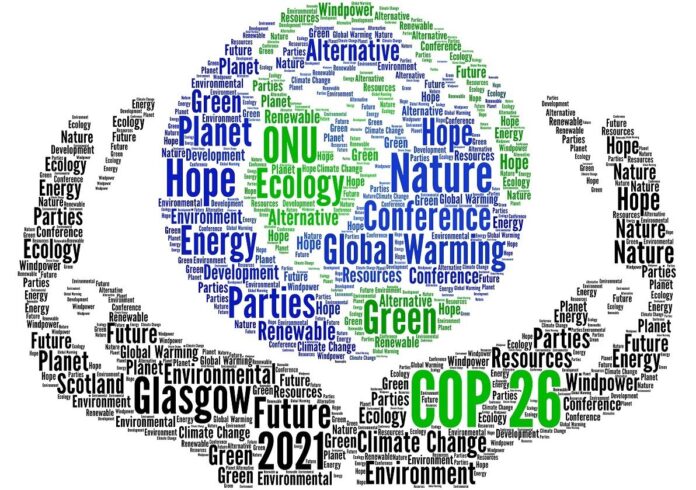The pledges and action plans to cut carbon emissions emanating from COP26 indicate that there is top-level recognition of the urgency of the climate emergency. Much of the focus in Glasgow was on cutting carbon emissions, but methane was also addressed, as the European Union, together with the United States and partner countries, launched the ‘Global Methane Pledge’.
The initiative recognises the potency of methane as a greenhouse gas and calls for countries to “commit to a collective goal of reducing global methane emissions by at least 30 per cent from 2020 levels by 2030 and moving towards using best available inventory methodologies to quantify methane emissions”.
The goal is to prevent more than 8 gigatons of anthropogenic carbon dioxide equivalent methane emissions (MMTCO2e) from reaching the atmosphere annually by 2030. Delivering on the Global Methane Pledge would reduce warming by at least 0.2 degrees Celsius by 2050, providing a crucial foundation for global climate change mitigation efforts.
The wastewater contribution
It is well understood that methane is released as a by-product of anaerobic wastewater treatment and in September 2021 a McKinsey report identified wastewater management as one of five industries collectively contributing 98% of anthropogenic methane emissions (estimating municipal wastewater represents 7-10%). In 2010, an estimated 512 million metric tonnes (MMTCO) of methane were released from municipal wastewater treatment, accounting for approximately 7% of total global methane emissions.
Methane is a short-lived climate pollutant, oxidising and dispersing within a decade, in contrast to carbon dioxide which persists for hundreds of years. However, its molecular structure gives it 84 times the warming effect of CO2. Given the immediate potency of this short-lived gas, the impact of cutting methane emissions on the climate would be considerable. As understanding and the profile of the role of methane in global warming has increased, efforts within the wastewater sector to abate, recover, and reuse methane emissions have even greater impetus and global value. The climate change business case to reduce methane emissions is strong and there are significant opportunities for the wastewater sector to help to take some pressure off the climate.
However, measuring methane emissions is notoriously difficult. Industrial methane emissions are often reported undistinguished from CO2 emissions, and this is a major limiting factor on methane reduction across industries. The inability to adequately measure methane emissions hinders the business case for methane reduction strategies.
In October 2020, the European Commission published a strategy for the European Union to reduce methane emissions, with a primary objective that organisations apply “considerably more accurate measurement and reporting methodologies for methane emissions (than is currently the case)”. This approach is expected to lead to a better understanding of the problem and to guide subsequent mitigation measures.
Opportunities for sector action
Arguably the water sector is at the forefront of research understanding both carbon and methane emissions from wastewater facilities and is well-placed to take an important lead on this. A seminal research paper (M Daelman et al, 2012) from 2012 identified methane emission and oxidisation rates (80%) in biological aerobic treatment facilities, knowledge which led to the identification of possible abatement measures.
“While municipal wastewater is not the dominant methane contributor, the sector can play a vital role in further reducing GHG emissions”
As a sector, there are examples of water utilities oxidising methane into biogas, a useful energy source. In the UK, for example, several utilities have invested in various ‘gas-to-grid’ biomethane projects or are using compressed biomethane to fuel vehicles. Demonstration projects are emerging around the world, such as Sydney Water’s Malabar wastewater plant, which will be used to power up to 24,000 homes, with other facilities in New South Wales set to follow.
Methane abatement technologies make use of the capital-intensive sanitation infrastructure available in developed countries, and the top biomethane-producing countries (not just from wastewater) are Germany, the United Kingdom, Sweden, France and the United States. The market for biomethane continues to grow because of global clean energy policies such as the European Green Deal, creating additional potential revenue streams for wastewater utilities. The largest opportunities to capitalise on the demand for biomethane lie in the Asia-Pacific region, where natural gas consumption and imports have grown rapidly in recent years.
Countries lacking that capital-intensive infrastructure are much less able to manage methane in this way. In developing countries with little or no collection and treatment of wastewater, sanitation is provided via lagoon systems, septic tanks, latrines, and anaerobic systems with greater methane emissions. Where there is investment in water services infrastructure, there are opportunities to include methane abatement or capture technology. Elsewhere, alternative approaches such as covered lagoons, using microalgae to digest methane, and utilising biosolids as fertiliser and as a low carbon energy source remain key targets for the global wastewater sector to drive down methane emissions.
While municipal wastewater is not the dominant methane contributor, the sector can play a vital role in further reducing GHG emissions, supporting innovations and improvement projects in developing countries, and supporting other sectors’ wastewater treatment efforts and methane strategies.
This opportunity becomes apparent when considering that, so far, more than 100 countries have joined the Global Methane Pledge, representing all regions of the world from developed and developing nations. Similarly, the Global Methane Initiative (GMI) Municipal Wastewater Technical Group, which is part of a wider GMI Biogas committee, currently has members from 16 countries providing international leadership to mitigate global methane emissions through the abatement, recovery, and use of methane from municipal wastewater. The group promotes collaboration between delegates from Partner Countries and Project Network members to build capacity, develop strategies, and expand opportunities for using methane as a renewable energy resource. •
More information:
Curbing methane emissions: How five industries can counter a major climate threat, McKinsey. (www.mckinsey.com)
Methane emission during municipal wastewater treatment, https://doi.org/10.1016/j.watres.2012.04.024








